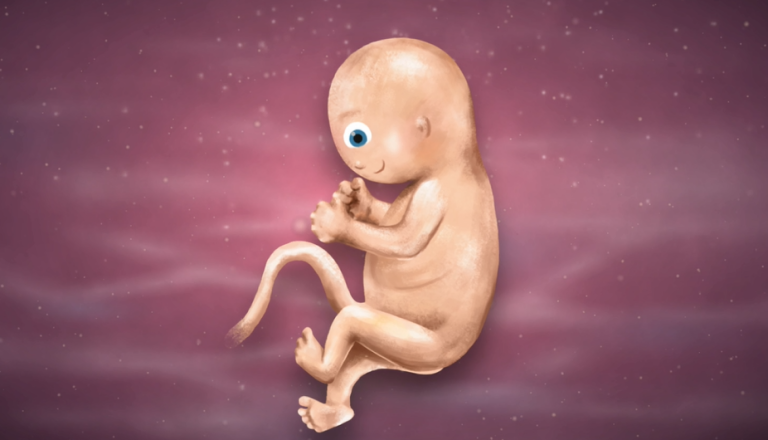As the end of pregnancy approaches, pregnants begin to have concerns about how the birth will occur. Under normal conditions, delivery is expected to occur between 38 and 41 weeks. Your doctor will give you information about how and when it will happen according to the health of the baby and the mother during the doctor’s controls.
In general, if all is well, at 37 or 38 weeks, the type of delivery begins to become apparent. Although you have planned everything, sometimes it may be necessary to make unplanned interventions to give birth. One of these interventions is artificial pain.
Types of Artificial Pain
The types of drugs given to start the birth or bring the labour pains to a sufficient level are called artificial pain. When it comes to provide artificial pain, connecting to a device and thus starting labour pains may come to mind. However, such is not the case. What is given to the mother in this application is the hormone oxytocin, and this hormone acts on uterine contractions and triggers the contractions necessary for childbirth.
There are different types of artificial pain because the drugs given to start the birth are different. These drugs and their types of application are as follows:
- Artificial pain medications can be given in the form of gel or medicine tablets placed in the vagina, and these applications do not cause any restriction on the mother’s movements.
- The most commonly used method of artificial pain is serum. The application may somewhat restrict the mother’s movements as long as the serum is attached.
Why is Artificial Pain Used?
For the birth to take place under normal conditions, the cervix must be thinned and opened. The thinning of the cervix, which is called effacement in the medical language, is expressed in examination centimetres. During the effacement period, when the cervix starts to examine, the cervix starts to open.
When the opening reaches 9-10 cm, it means that the thinning level has reached one hundred per cent, and the birth is about to begin. At this stage, if you ask about artificial pain, it is used to accelerate the opening and make thinning faster. Thus, the baby reaches the birth canal more quickly, so birth begins.
You can find more information about cervical opening in here: https://www.bebek.com/en/what-does-cervical-opening-mean-in-the-delivery-process/#What-Is-Cervical-Opening
How to Make Artificial Pain?
You want the birth to occur under normal conditions, and you have decided on this direction. However, suppose your baby does not come even after completing the 9 months, after the necessary controls are made. In that case, the expectant mother is asked to choose between caesarean section or artificial labour.
If there is no problem and the necessary conditions for expected delivery are met, artificial pain can be considered with the doctor’s approval.
- You may hear rumours from your environment that artificial pain is an excruciating practise. Contrary to popular belief, the drugs we mentioned earlier are used in this application. Artificial pain medications can be in gel or tablet form. These drugs are placed on the back of the cervix, and the process is completed.
- Another application is the oxytocin hormone given intravenously. This hormone helps the uterus contract. At the same time, thanks to oxytocin secreted from the brain as the love hormone, contractions begin, and delivery is faster.
In Which Situations Is Artificial Pain Used?
In the previous parts of our article, we mentioned that artificial pain is always applied in delayed births. However, in addition to this, some different situations may require an external intervention to initiate the delivery. These situations are:
- If the delivery has not started even after 40 weeks in general,
- If there is high blood pressure in pregnancy called preeclampsia,
- If an intrauterine infection has developed
- If there are anomalies caused by pregnancy,
- If abnormal situations occurred as a result of the tests,
- If there is a developmental delay during pregnancy,
- If the baby in the womb is not alive,
- When the baby defecates in the mother’s womb in cases of expiration,
- If the birth water has come, but the pain necessary for birth has not occurred, the application can be made.
In which pregnancies are artificial pain not applied?
In some pregnancies, artificial contraction is not recommended. This application is not recommended in the following cases:
- If the mother-to-be has had a previous hysterectomy or delivered by caesarean section, the incision was made transversely.
- In case of cord sagging.
- If the baby is in the womb in a side position.
- If the baby is overweight.
- If the baby’s head is larger than average.
- If the mother’s pelvis bones (roof bones) were not found suitable for normal delivery on examination.
- If the placenta closes uterus.
- If the mother has an active genital herpes (herpes) infection.
- If there is a condition that will prevent the baby from coming out of the vagina due to uterine fibroids, cancer or deformations in the pelvis after an accident or illness.
- If the baby is too distressed to tolerate oxygen depletion between uterine contractions.
Are There Any Harms or Side Effects of Artificial Pain?
As with every medical intervention, there are some side effects and risks that we can call the harms of artificial pain. Pregnant women who need to be given artificial pain are already in the risk group, so care should be taken in their controls. These situations, which can cause problems if they occur, can be prevented with a strict follow-up. For this reason, it is possible to predict and eliminate the dangers that may occur thanks to the appropriate team, the appropriate time and the appropriate method.
Possible side effects and problems that may occur as a result of the application can be listed as follows:
- Frequent and complex contractions: Contractions that come two or three times every ten minutes in normal birth and last for 30-40 seconds are the painful process that should be for an ideal birth. The cervix relaxes and prepares for birth in the period between contractions that occur with pain or pain. If the time between these contractions is shortened by artificial pain, the uterus does not have time to relax, and there is a possibility that the blood flow to the baby will decrease with these contractions. As the blood flow pattern is disrupted with this problem, the baby’s blood beats also decrease, and the baby begins to have difficulties in oxygen intake. In such a situation, the baby can be saved with a vacuum or an emergency cesarean section is intervened. In this case, the probability of babies entering intensive care increases.
- Uterine rupture: Uterine rupture, which is very rare, is usually caused by previous uterus surgery, a history of large babies, etc. It is possible to be seen in expectant mothers who have experienced these conditions.
- Water intoxication: Another rare problem is water intoxication. This situation occurs due to the oxytocin hormone used in the artificial pain application. When the hormone is applied for a long time, there is a possibility of a decrease in urine and accumulation of water in the body. Due to the excess water retained in the body, the sodium level in the blood may decrease and cause unconsciousness. For this reason, the duration of the application is as important as the method.
- Postpartum bleeding: Another problem that occurs when artificial pain is applied longer than it should be is the deterioration of uterine contractions. The bleeding problem may occur due to postpartum contractions.
When deciding on the mode of delivery, you and your doctor should determine the most accurate method. If there is a situation that may pose a risk, the process should be evaluated in this direction. For example, everything is progressing normally, but maybe your baby needs a little touch to be born. There is no need to worry about such a possibility.
Necessary controls are made, positive and negative aspects of the process are taken into consideration. Then, the artificial pain method can be preferred due to correct and sufficient information between the mother, father, and doctor trio. For this reason, it would be best to evaluate the information your doctor gave you correctly and to make your decision by eliminating the question marks in your mind one by one.
Would you like to share your experiences and questions as a comment?
Have a nice and healthy day!







